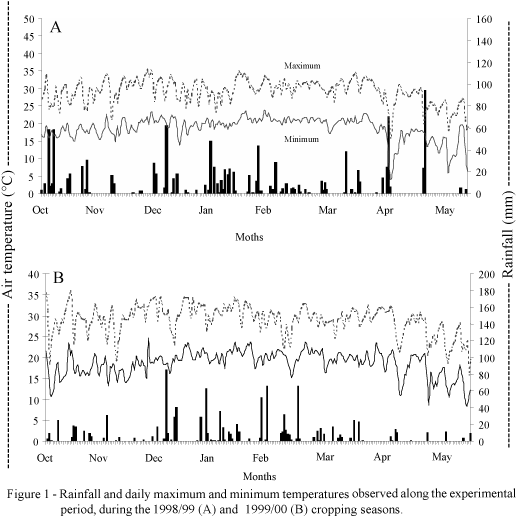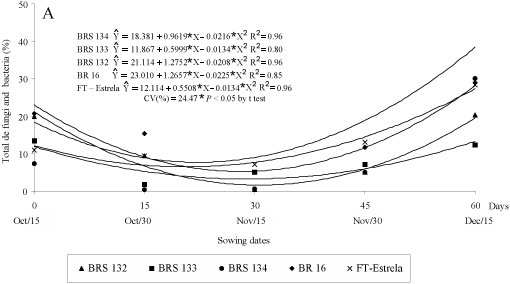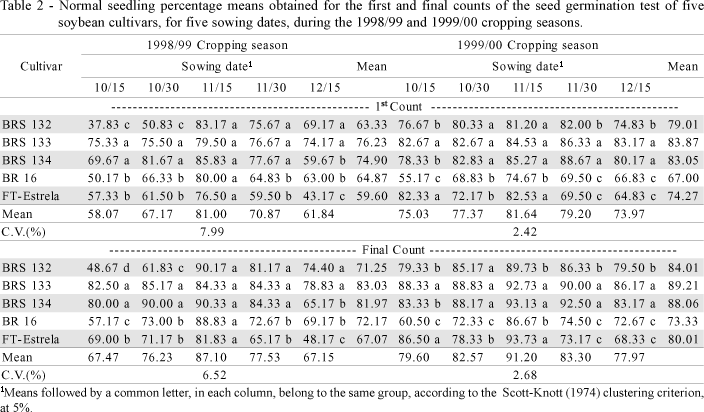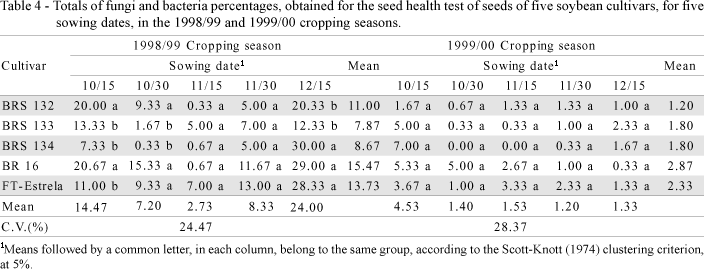Considering the difficulties of producing high quality soybean [Glycine max (L.) Merrill] seeds during the traditional cropping period in some areas of the State of Paraná, Brazil, a research project was carried out with the objective of evaluating the influence of sowing dates on the physiological and sanitary quality of seeds, during the 1998/99 and 1999/00 cropping seasons, in Maringá, PR, Brazil. The experiment consisted of five cultivar competition assays, arranged in a completely randomized block design, with each assay sown at different dates (10/15, 10/30, 11/15, 11/30 and 12/15) for each cropping season. The evaluated cultivars were BRS 132 (early), BRS 133 (semi-early), BR 16 (semi-early), BRS 134 (intermediate) and FT- Estrela (late). Seeds obtained at the sowing dates were evaluated in the laboratory by germination, accelerated aging, and health tests. Sowing in November resulted in seeds with superior physiological and health quality. Cultivar BRS 133 showed the greatest stability in seed production with better quality for the different sowing dates. Cultivars BRS 134 and BRS 133, which were sown during the period from 10/15 to 11/30, produced seeds that had higher percentages of normal seedlings in the germination and accelerated aging tests. Advancing or delaying sowing dates had adverse effects on soybean seed production with regard to their sanitary quality.
cropping; cultivar; germination; health











